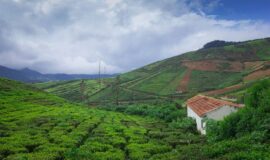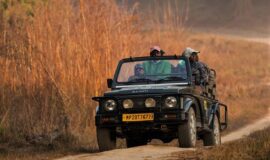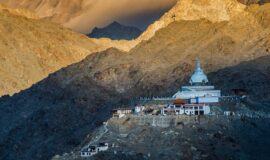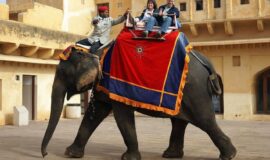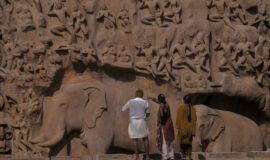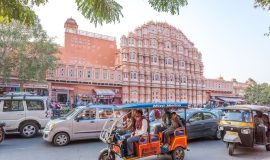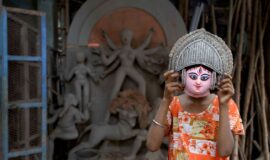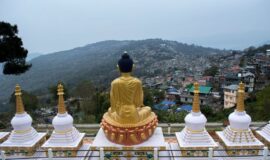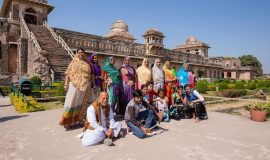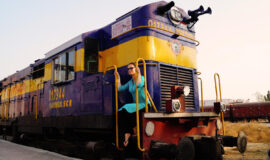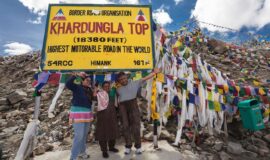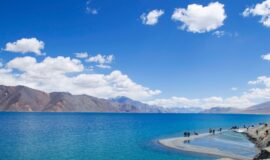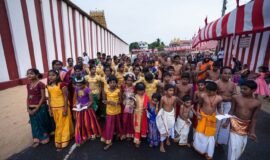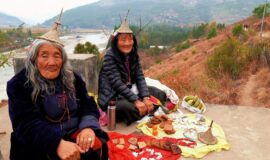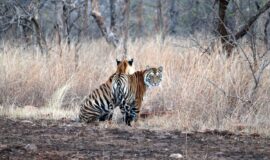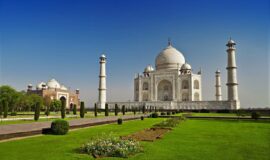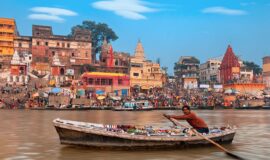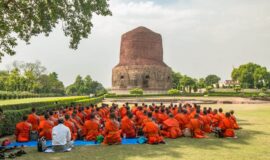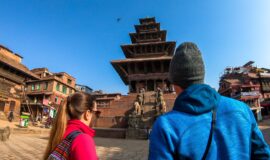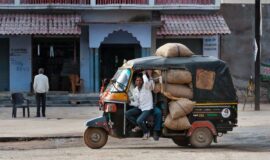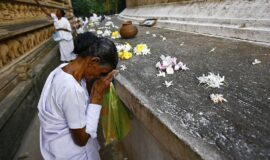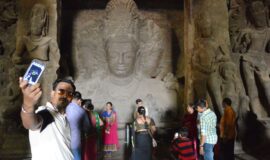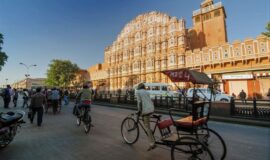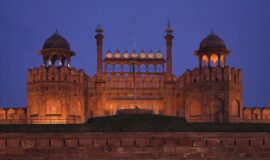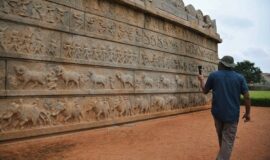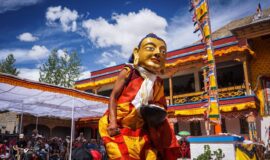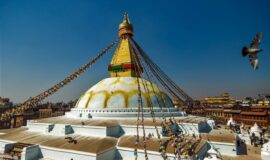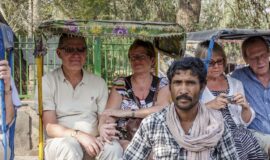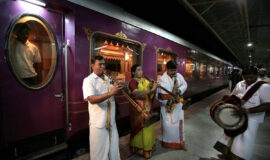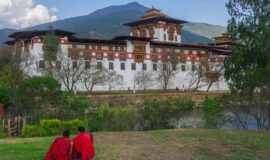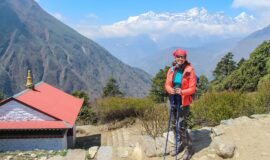Darjeeling Toy Train
Reminder: The train owes its origin to the tea trade
Navigation
Some Images From Our Trip to Darjeeling Toy Train
The Darjeeling Himalayan Railway (DHR) is popularly known as the “toy train.” The fact of the matter is this train is truly an engineering masterpiece. It is an astounding powered rail vehicle that takes you almost 140 years into the past. One of its major attractions is its very existence after so many years and how well it has been maintained. But the fact that it overturns all the rules of modern-day travel is also a wonder. Truth is the train travels very slowly; it’s awkwardly solid and outdated. Moreover, if you want it to run on steam, you can pay a couple of extra thousands to do so.
Perhaps the only place you can travel on a train that runs on steam for almost 90kilometres is on the Darjeeling Toy Train. It will take you from the flatlands up to the magnificent mountains in about eight hours. Not everyone can afford to pull out sixty thousand rupees-as many toy train lovers do-to book a steam locomotive. So for much less, you can be hauled slowly up the Darjeeling hills by a diesel engine.
If you don’t have sixty thousand rupees, but you feel you must experience what it is like to travel on a train run by a steam engine, you still have the opportunity to do so. Short joyrides between the Darjeeling and Ghoom stations are available at a price much easier on the pockets. These daily rides cost about USD 35 per person.
A visit to Darjeeling town itself is a great reason to travel to the North Bengal hills. This place is well-known as the Queen of Indian hill stations. In Darjeeling, you can take it easy and enjoy the lackadaisical atmosphere, laze around in the shade of the Himalayan snow ranges. Sip as much tea as your heart desires and travel on the infamous toy train.
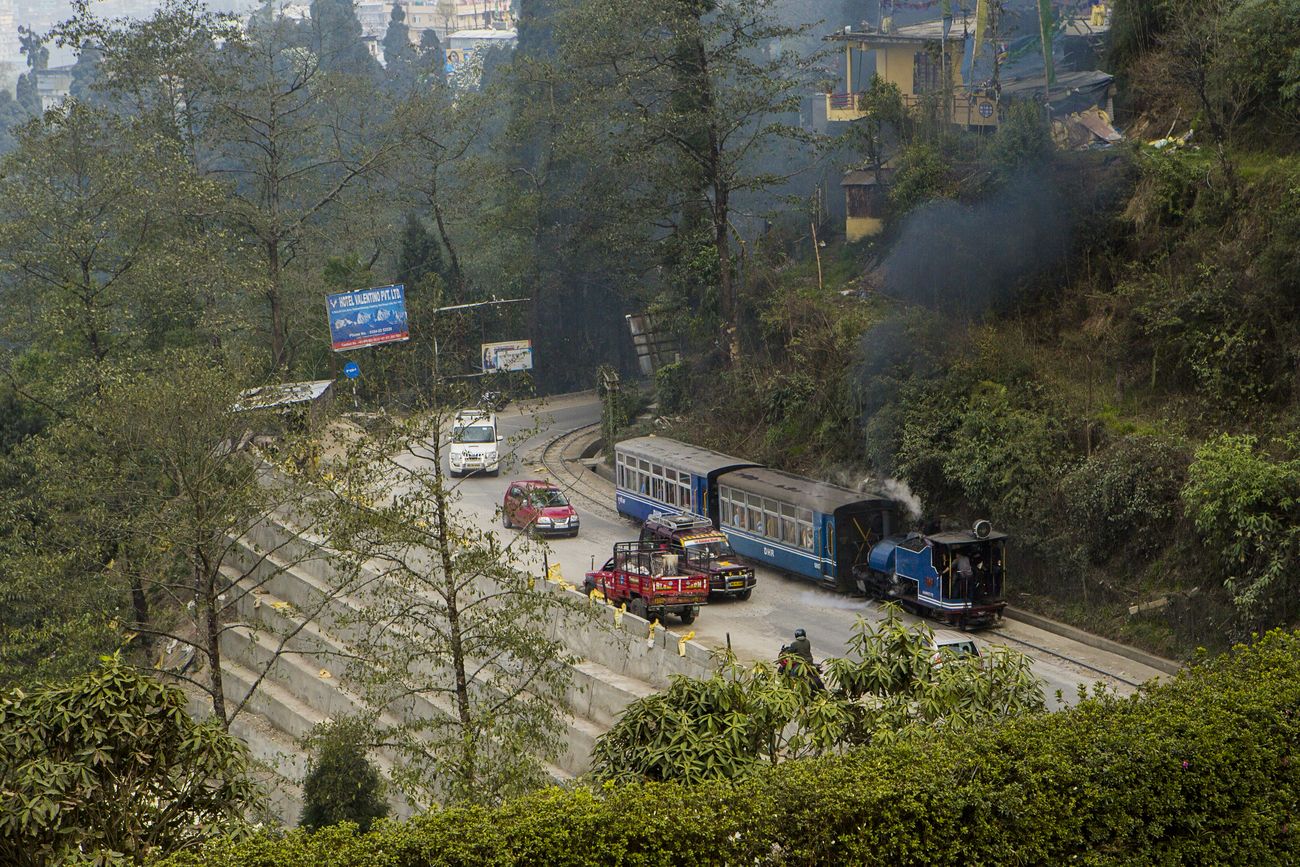
A bird’s eye view of the tracks of the Darjeeling Toy Train which at many points travels right by the vehicles on the highways of the Darjeeling district © Irit
In a New York Times report dated July 30, 1888, the Darjeeling train was described as “a queer affair.” It gives a vivid picture of the latter part of the journey as the train enters the Darjeeling station: “Thousands of feet up in the air as we are, with the great plain of Northern Bengal growing dim in the far distance below us, we seem to be quite down in the valley compared with those mighty ridges that loom overhead in all their blue, shadowy vastness; and even these are as nothing to the giant ramparts of eternal snow which tower unseen behind them.”
The famous author Mark Twain traveled on the train in 1896, a few years later. The railway trip is forty miles up the mountain taking about eight hours to complete. The journey is described as being so adventurous, exciting, interesting, and enchanting that it should take a full week.
The Darjeeling Himalayan Railway is indeed an engineering exploit. How this 140-year-old train does the loops and Z-reversals to negotiate the steep inclines makes an interesting narrative. Apparently, the British engineer commissioned to get the train up the hills was on the verge of giving up when his wife sent him a letter saying, “If you can’t go forward, come back (to England).” It is said that instantly gave the engineer the idea of the Z-reversal technique. With this method, the train treads back on the tracks so it can increase its power before slowly going up a Z-shaped route to maneuver the sharp incline.
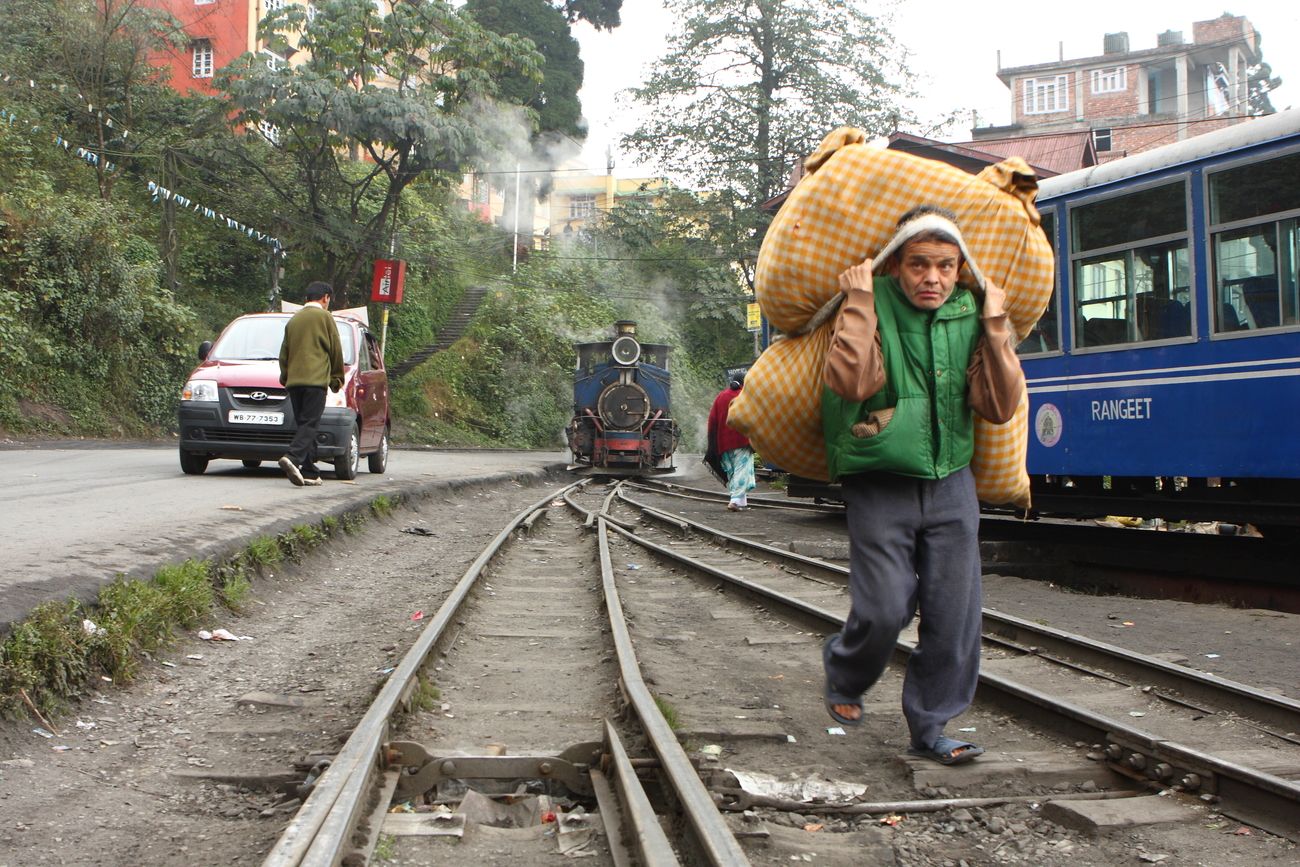
With railway tracks next to the main roads during much of its course, the Darjeeling Toy Train often travels parallel to cars, and is parked on the roadside too! © De Visu
Reminder: The train owes its origin to the tea trade
In 1835, the ruler of Sikkim, which at the time was an independent kingdom, gave the small district of Darjeeling to the British as a gift. Four years later, the Brits appointed Archibald Campbell as superintendent of the hill station. He introduced several things to this hamlet including tea cultivation. It is believed that following its discovery in 1826, a native variety of tea was being grown in Assam. However, Campbell’s Chinese tea flourished in the soil. This, along with the cool weather caused tea cultivation to be a success. To this day, the strict rules Campbell implemented about how tea should be picked and processed are still kept.
Traveling from Siliguri to Darjeeling (62 Km) was not easy although the Hill Cart Road was constructed and the British journeyed on horseback or pony carts. Therefore, Franklin Prestige persuaded the government to build a railway line into the hills. This was built in stages. Between 1879 and 1881, it was an engineering wonder just having a railway. The journey between New Jalpaiguri (NJP) and Darjeeling is 2,112 meters high and 88-kilometers in distance. The trip takes you through a sequence of z-reverse techniques and loops, which enables it to climb the steep hill. It was called the Darjeeling Steam Tramway Company when it was first founded. However, it was subsequently renamed Darjeeling Himalayan Railway (DHR).
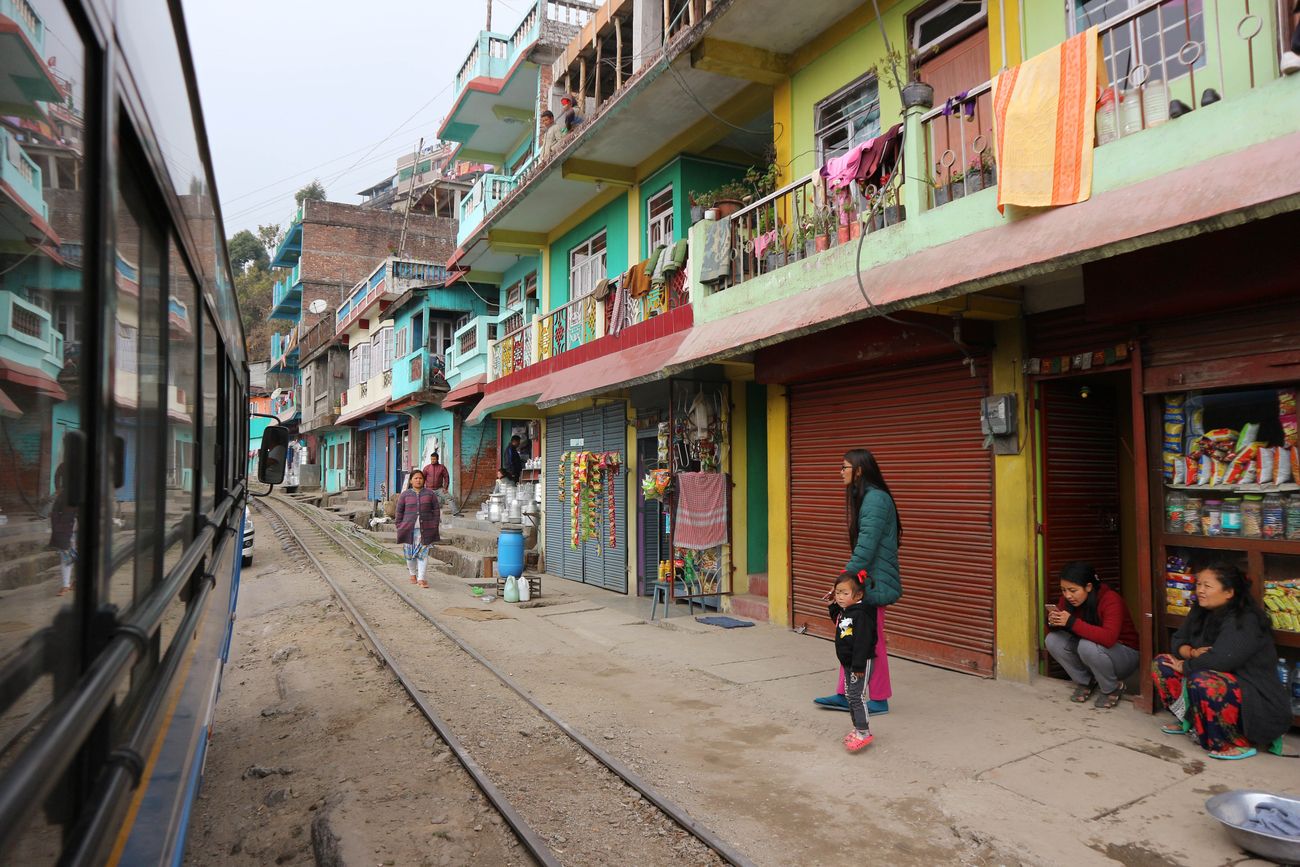
The view from the window of the Darjeeling Toy Train Everyday life seems to overflow on to the railway tracks You can look into people’s living rooms, check the jar labels in the stores, and have your mouth water at the sight of a delicious serving of dumplings © Natasha Karpuk
“To experience the Darjeeling Toy Train without breaking the bank, you have the option of traveling short journeys on the steam or diesel-run vehicles. These rides can be booked between Darjeeling – Ghoom – Darjeeling. The trip takes a total of 1 hour and 40 minutes to complete.”
“If you have the money to take the long journey, you can book your travel to Darjeeling from new Jalpaiguri-90 km. Take this adventurous trip from the meadows to magnificent mountains. This wild enchanting journey takes about eight hours to finish.”
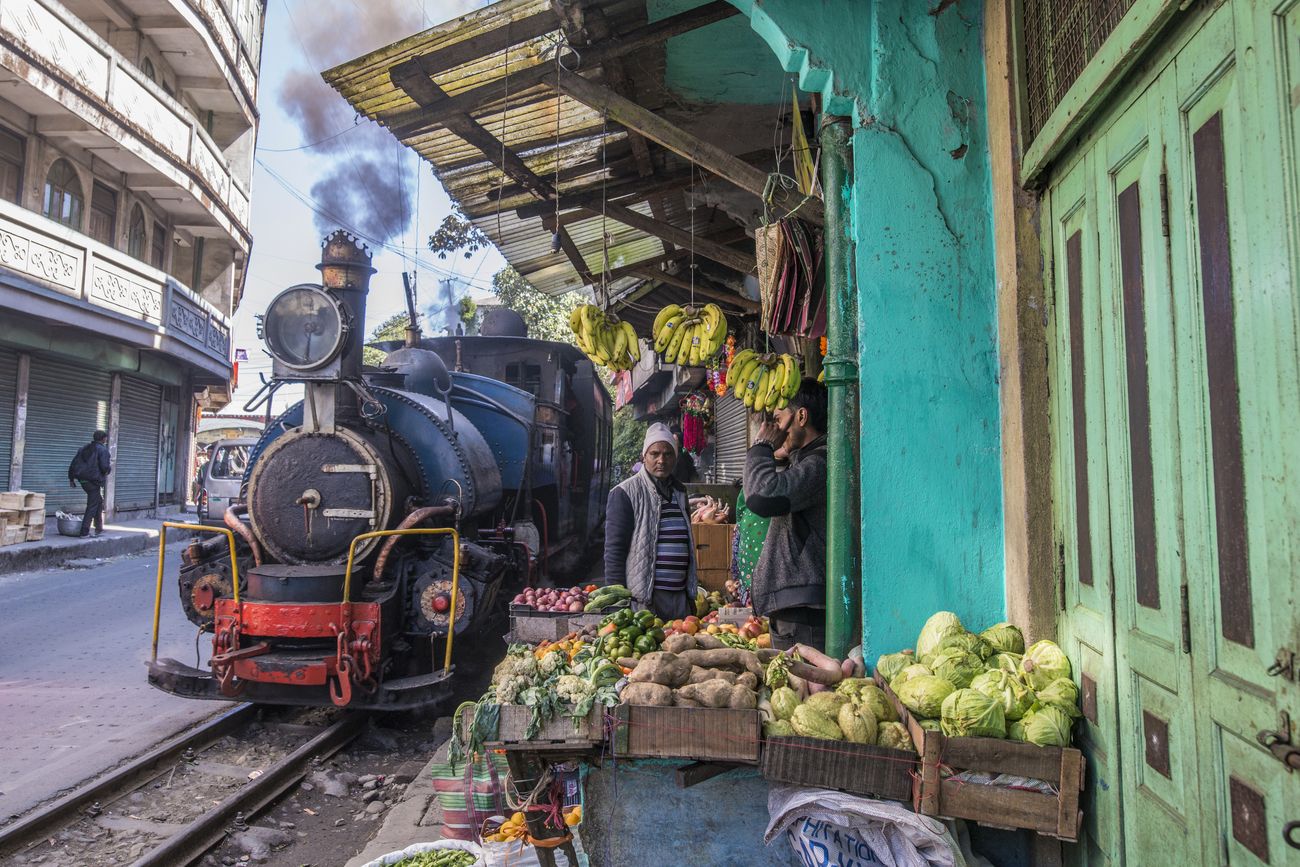
A rare sight, the Darjeeling Toy Train passing by a market stand near Ghum railways station with no more than a few inches clearance © Panoglobe
The New Jalpaiguri-Darjeeling Passenger (NJP-DJ) train leaves Siliguri Junction station (20 km from Bagdogra Airport) at 10 a.m. every day. This journey typically takes 7 hours, 20 minutes on the two-feet (0.610 m) gauge track. The train is made up of a blue diesel engine that hauls three coaches. You won’t have to stretch your imagination to see why it is popularly called the toy train.
As soon as you settle down and sit by the large windows, the train will make its move. On your journey, you will pass by the Sukna station and several tea gardens with forests in between.
At the Rongtong station crossing, you will experience the first of many loops necessary to get you up the hill. The Hill Cart Road and the railway track are adjacent to each other. From time to time, you will pass through a patch of the forest then you will be back on the road again, at times even passing right across. The journey is wild and exciting as the train embraces the hillside and the slopes.
As it nears Tindharia, it’s time for the first Z-reverse. Hang on! The train reverses and then propels forward with greater momentum to get up the hill. Oftentimes, a train may be anchored at a higher level to let another train headed in the opposite direction go through.
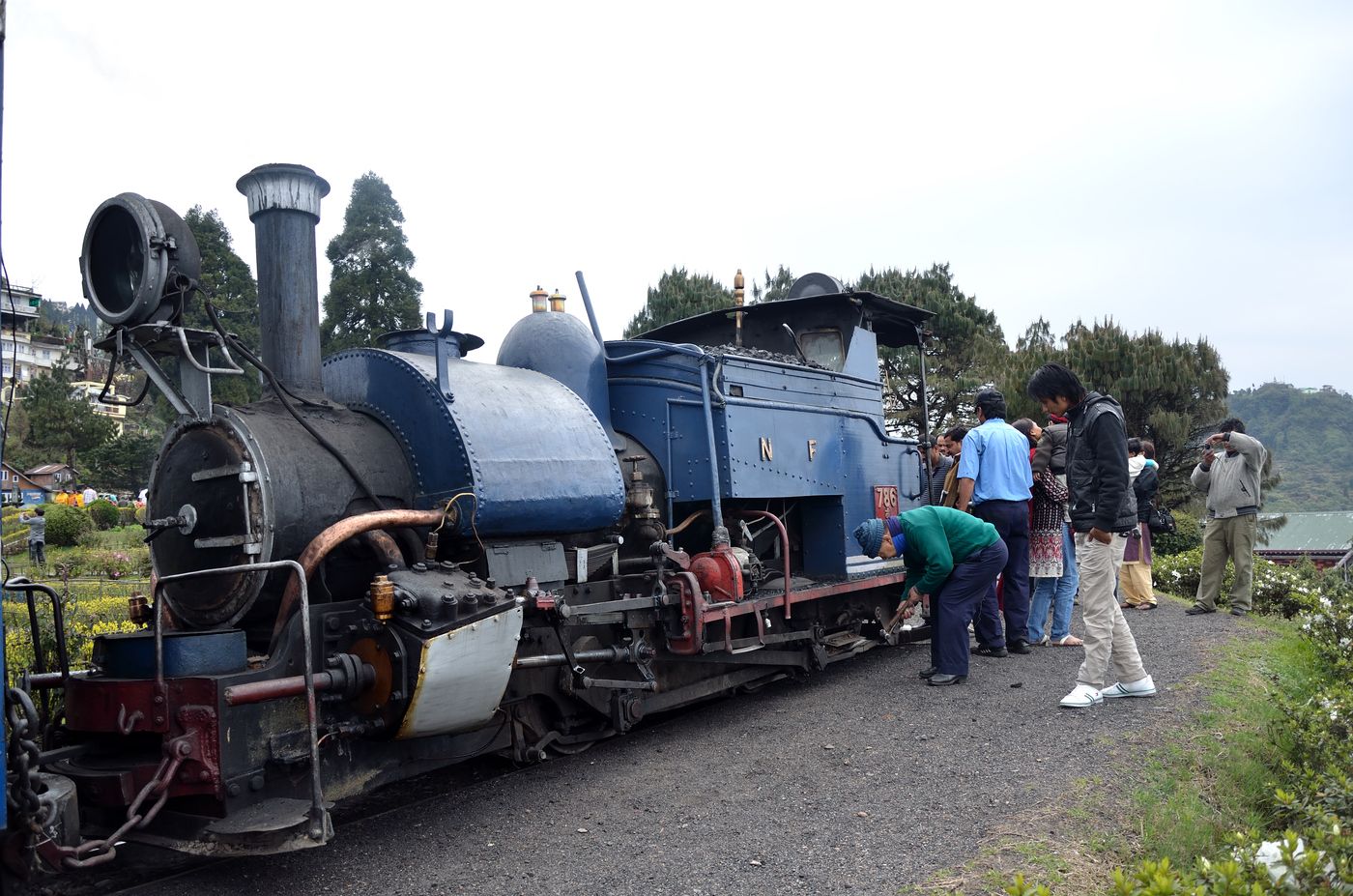
The Toy Train stops at Batasia War Memorial station in Darjeeling and people walk and go around the engine while looking over the lovely valley below © Mrinalnag
The Darjeeling train crosses many loops and makes several Z-reverses before it goes past Gayabari station. Later in the journey, the toy train passes across Pagla Jhora (mad torrent). This is a hill spring that has a significant increase in water volumes during the monsoon. Sometimes, this creates landslides or causes the tracks to partially wash away.
As you journey to Kurseong, you get a closer look at the many tea gardens along the way. The satiny bushes spread across the hills as far afield as the eyes can behold. If you travel this way during the season for plucking, the scene will be quite different. Women crowd these fields with baskets on their backs (kept in position by a rope tied around their heads) picking the leaves and buds. This is no ordinary job; in fact, it requires gentleness; therefore, plucking practice is essential.
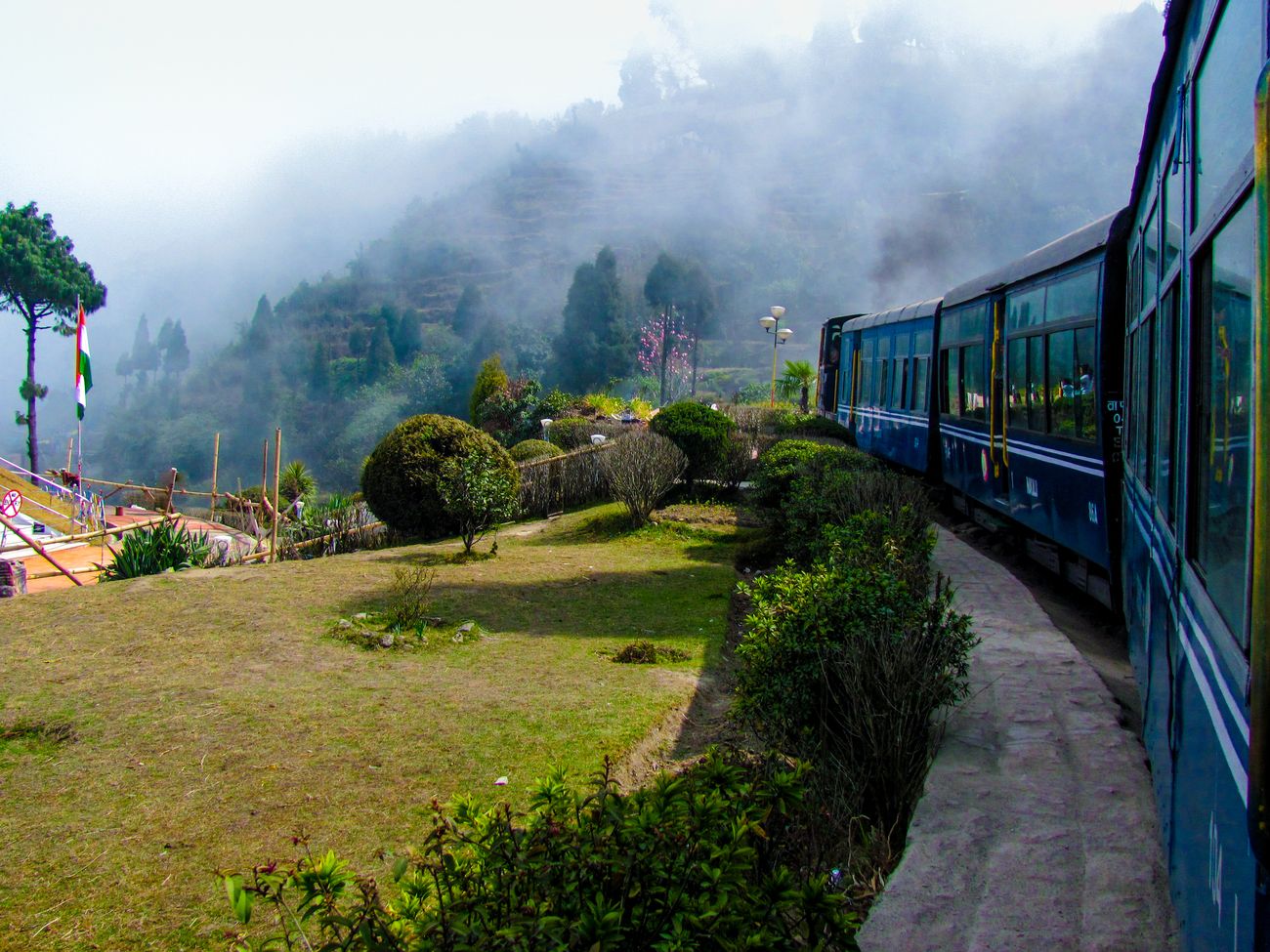
The Darjeeling Toy Train is known for excellent views of gardens and valleys through its course across the picturesque landscape of Darjeeling © Amlan Mathur
Every tea garden has its own factory where the leaves are processed. Traditional techniques are used to keep the flavors intact. The tea has a brownish-black color with a well-twisted appearance and consists of what is called a “golden tip.” It is said that particular scientific characteristics of the leaf determine the quality of the tea—tipping is one such. Tipping is essentially the initial few rounds of plucking. The furry leaves and buds of the plant produce the “tip.” The Darjeeling variety has plenty of these.
The process of tea production is long. Getting that delightful tea from the garden to the cup requires these steps:
1. withering
2. rolling
3. oxidation and fermentation
4. drying
5. grading
Tea tasters are paramount to the tea trade. It requires experience and expertise as tea tasting determines the standard of the tea based on its fine flavor, astringency, color, and other qualities.
Tea tourism is now being promoted by many of the tea gardens in the Darjeeling area. Visitors get to tour the gardens and factories. They can also engage in tea tasting or live in luxurious bungalows some of which are dated as far back as the British era.
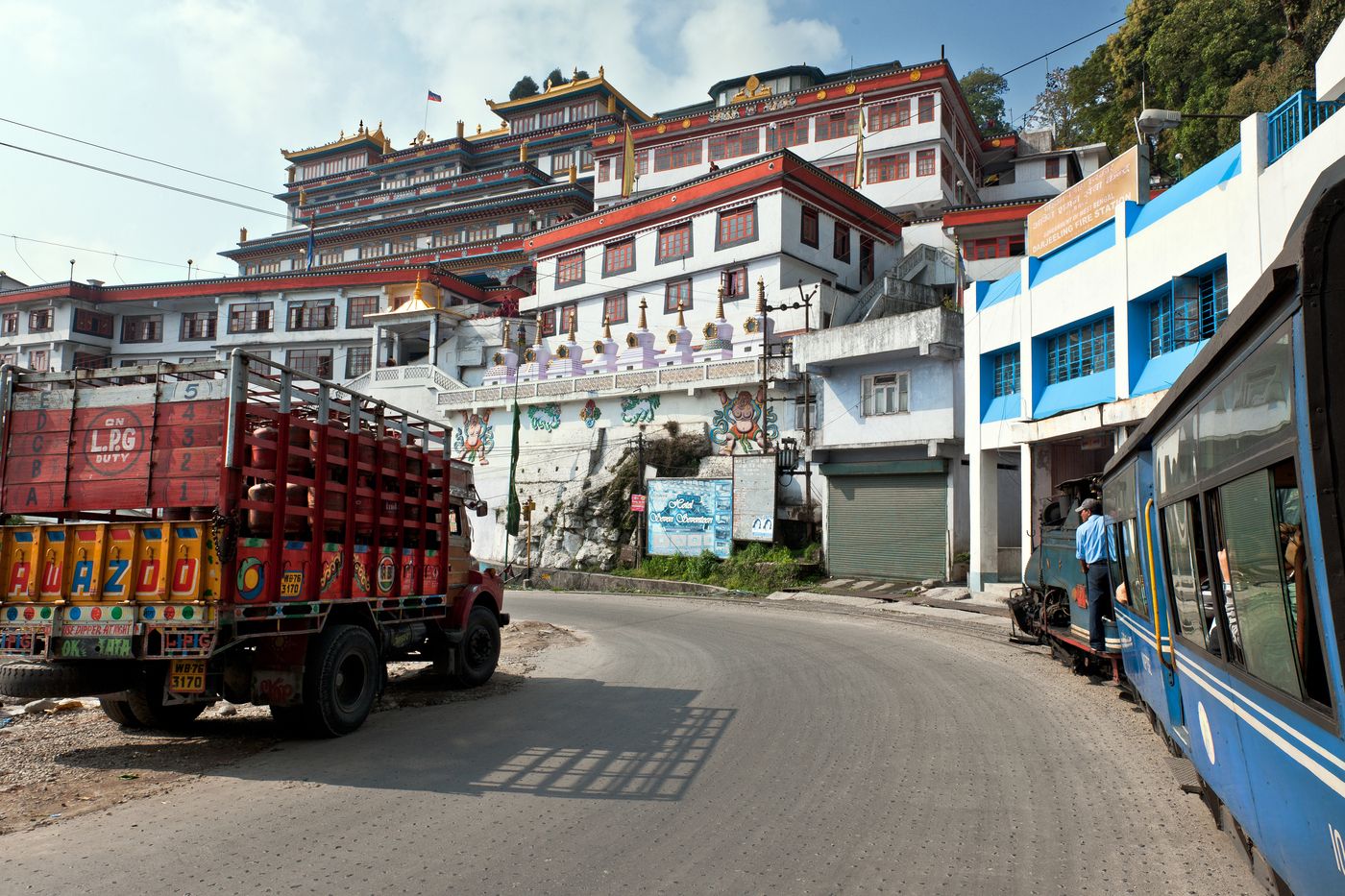
The Darjeeling Toy Train turns left alongside the highway while crossing the Yiga Choeling monastery of Ghum © Pavliha
The Darjeeling train runs through some of the most crowded areas of Hill Cart Road. Everyday life seems to appear to overflow on to the tracks of the railway. You can get so close you can look into living rooms, check labels of jars in the stores, and spring water from the mouth after seeing a plate of delicious dumplings being eaten by friends in a wayside restaurant. When the train goes around a corner, the engine toots energetically. Several people choose to walk along the tracks since the roads are jammed with hectic traffic.
After leaving the Tung station, the train crosses Sonada, which is called the “Cave of Bear” in the local Lepcha language. Actually, it is said Mark Twain wrote a story about an urgent telegraph sent by a railway manager to his office in Calcutta. Apparently, it said, “A tiger is eating the station master on his front porch. Please telegraph instructions.” In the 19th century, these areas were densely forested; hence, it was the habitat of many wild creatures.
Ghum (Ghoom) is known as one of the highest railway stations in the entire world. And definitely India’s highest. It sits some 2,258 meters and is blanketed with mist all year round. After the precipitous climb, the train comes to a halt for 10 minutes, perhaps to rest.
Darjeeling Himalayan Railway was given World Heritage Status by UNESCO in 1999. Later on, this status was extended to Nilgiri Mountain Railway and Kalka-Shimla Railway. Together, they are classified as the Mountain Railways of India.
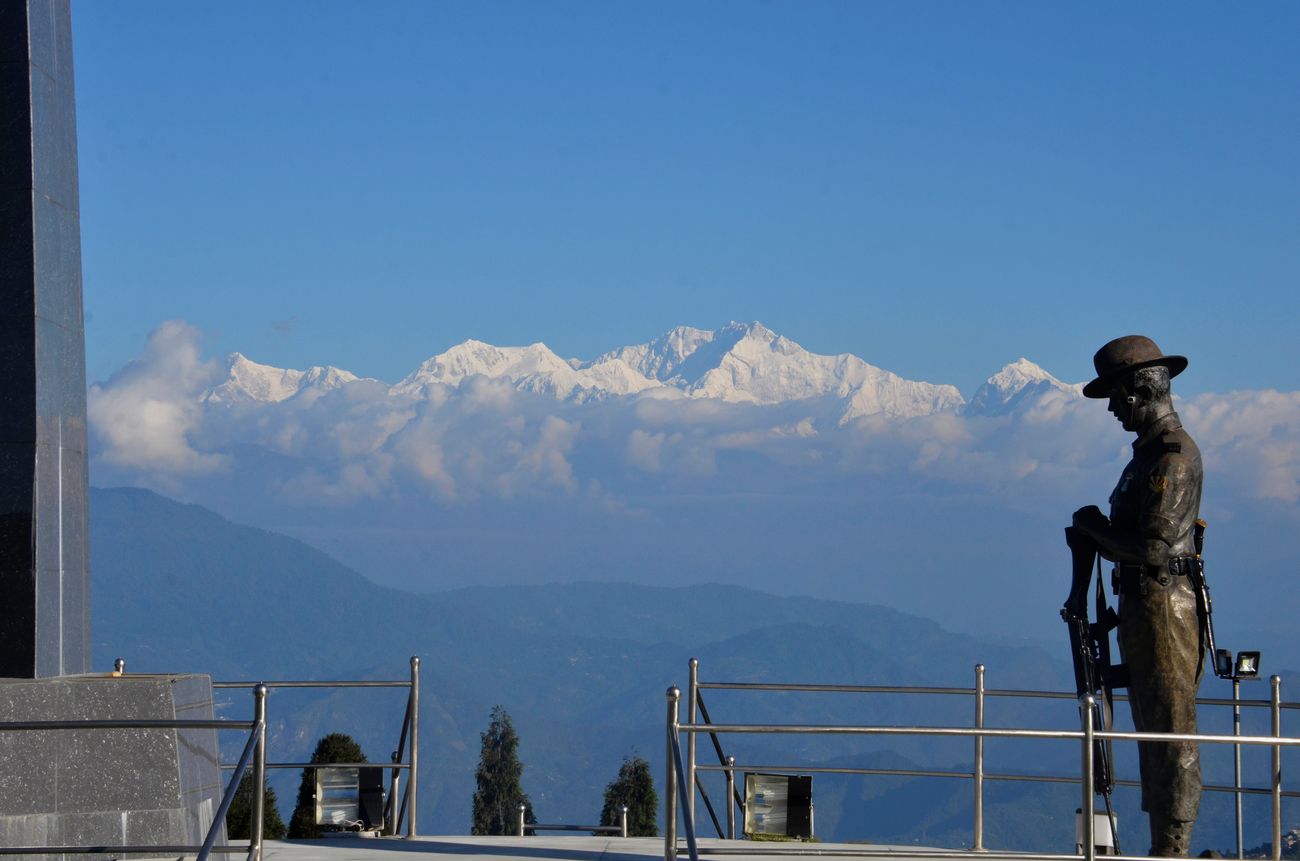
The Darjeeling War Memorial is dedicated to the Gorkha soldiers of the region and is located at the center of the Batasia Loop Garden, overlooking Mount Kanchenjunga © Chaithanya Krishnan
Next up after the train leaves Ghum is the popular Batasia Loop. This loop is one of the several engineering wonders about this railway. It is a double spiral. The 360-degree view of the hills from the train is magnificent. A beautiful park with a memorial dedicated to Gurkha soldiers is there. After Ghum, the train heads downhill to Darjeeling town.
The colonial memories of Darjeeling have faded; however, remnants of the pre-independence town live on in spots: a hotel here or there, a traditional restaurant, a clock, a botanical garden, or a vintage photo studio. More modern brands have become popular but of note, two of the older restaurants Keventers and Glenary’s are still very famous. Keventers is favored for breakfast, tea, and its glorious mountain views. Glenary’s is preferred for lunch.
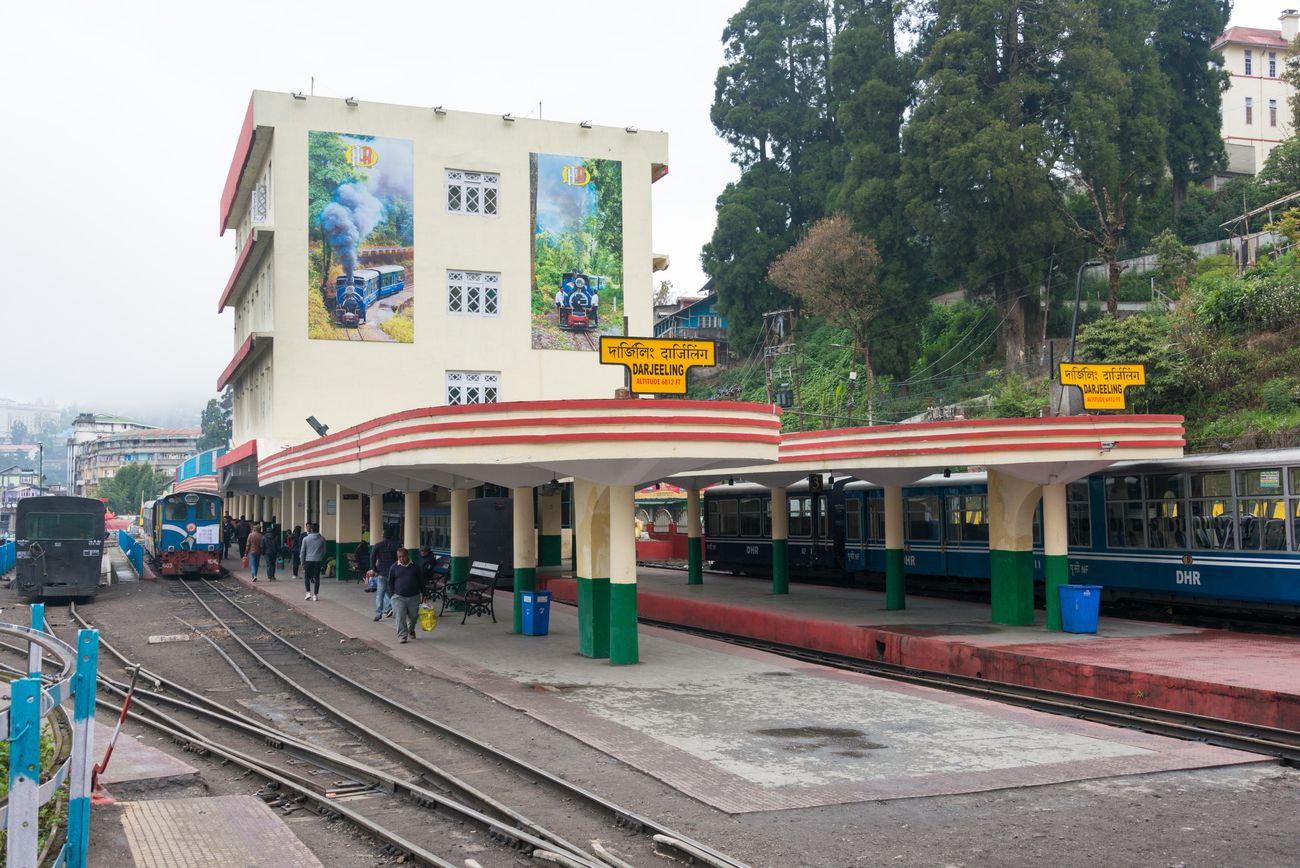
The Darjeeling railway station is an important junction where many trains from West Bengal and the North-Eastern states of India connect © Beibaoke
Navigation
Bagdogra is the closest airport; it is some 14km away from Darjeeling. From Siliguri, Darjeeling is 65km away if you travel through Hill Cart Road and almost 80km away if you take the National Highway 10 route. Daily direct flights to Bagdogra can be had from Kolkata, Mumbai, and New Delhi.
Places you can stay: Central Heritage, Windamere Hotel, Mayfair Darjeeling or
Elgin Darjeeling. Other Budget options are also widely available.
Tip: Avoid traveling to Darjeeling during the monsoon season. At this time, it is common for landslides to occur.
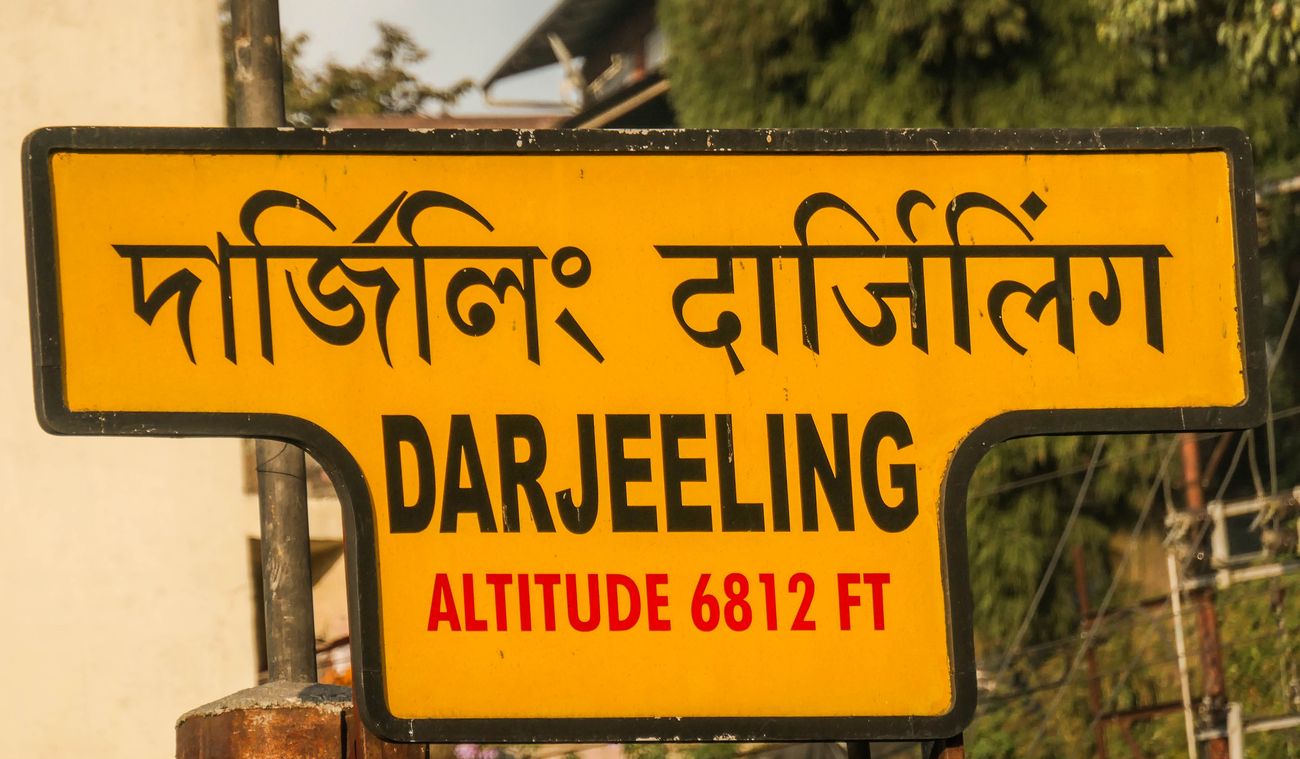
The Darjeeling railway station is an important railway junction that connects the North East of India and is situated at a height of 6,812 feet or 2,076 meters, making for a beautiful train journey © Barbara Bednarz
Some Images From Our Trip to Darjeeling Toy Train
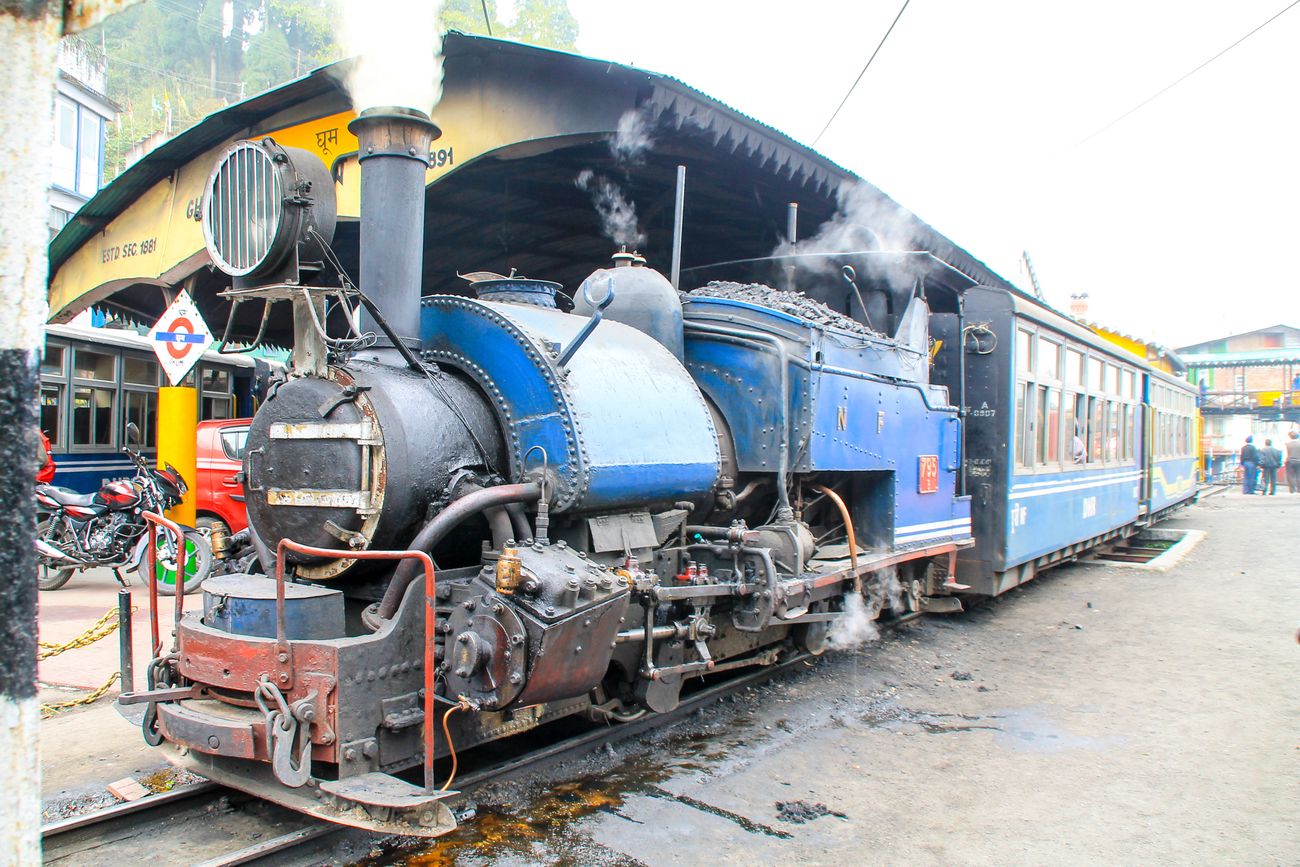
The steam engine of the Darjeeling Toy Train, often dubbed as the queen of Darjeeling, and recognized by UNESCO as world heritage © AlexM9
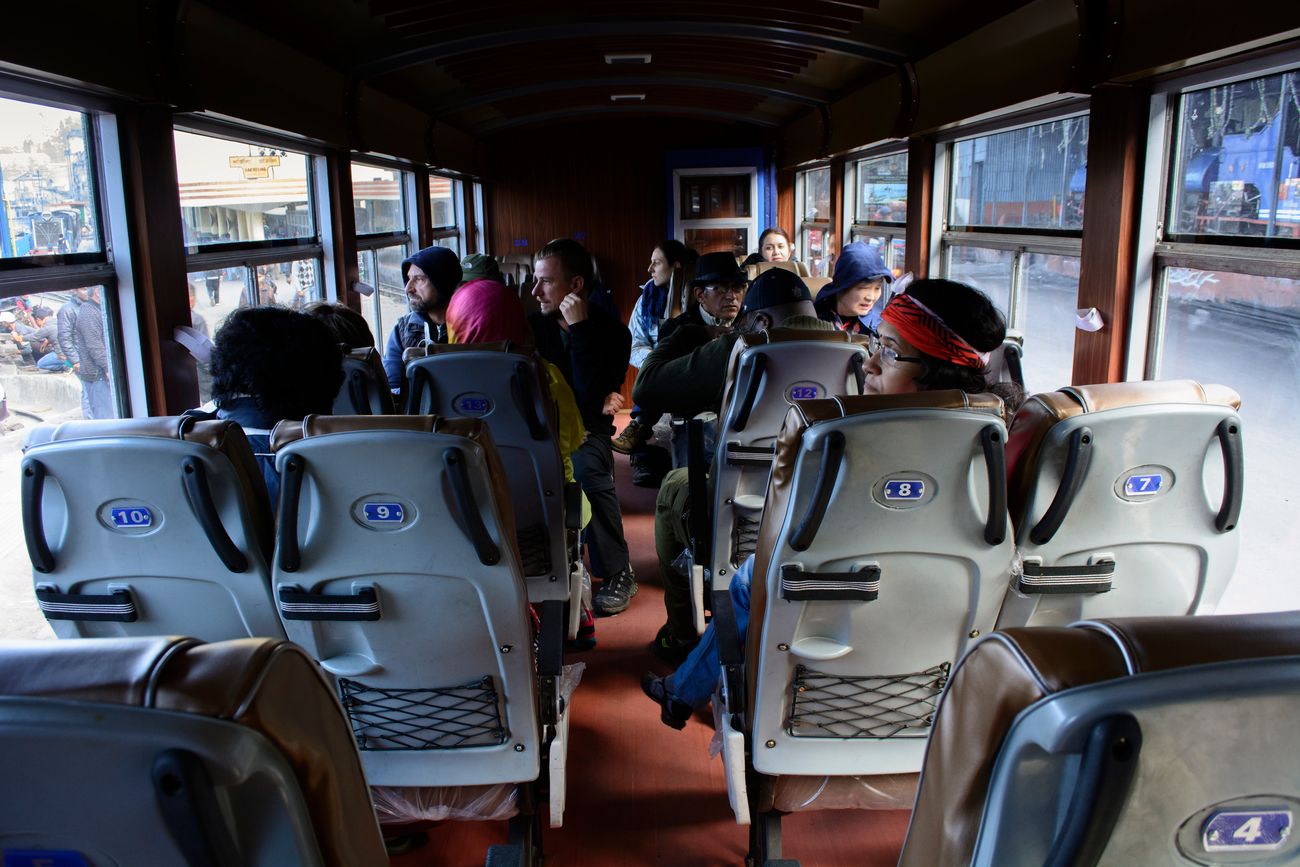
Given the narrow gauge of the Darjeeling Himalayan Railway Train, the interior of the train includes a chair car seating arrangement for passengers © Kakoli Dey
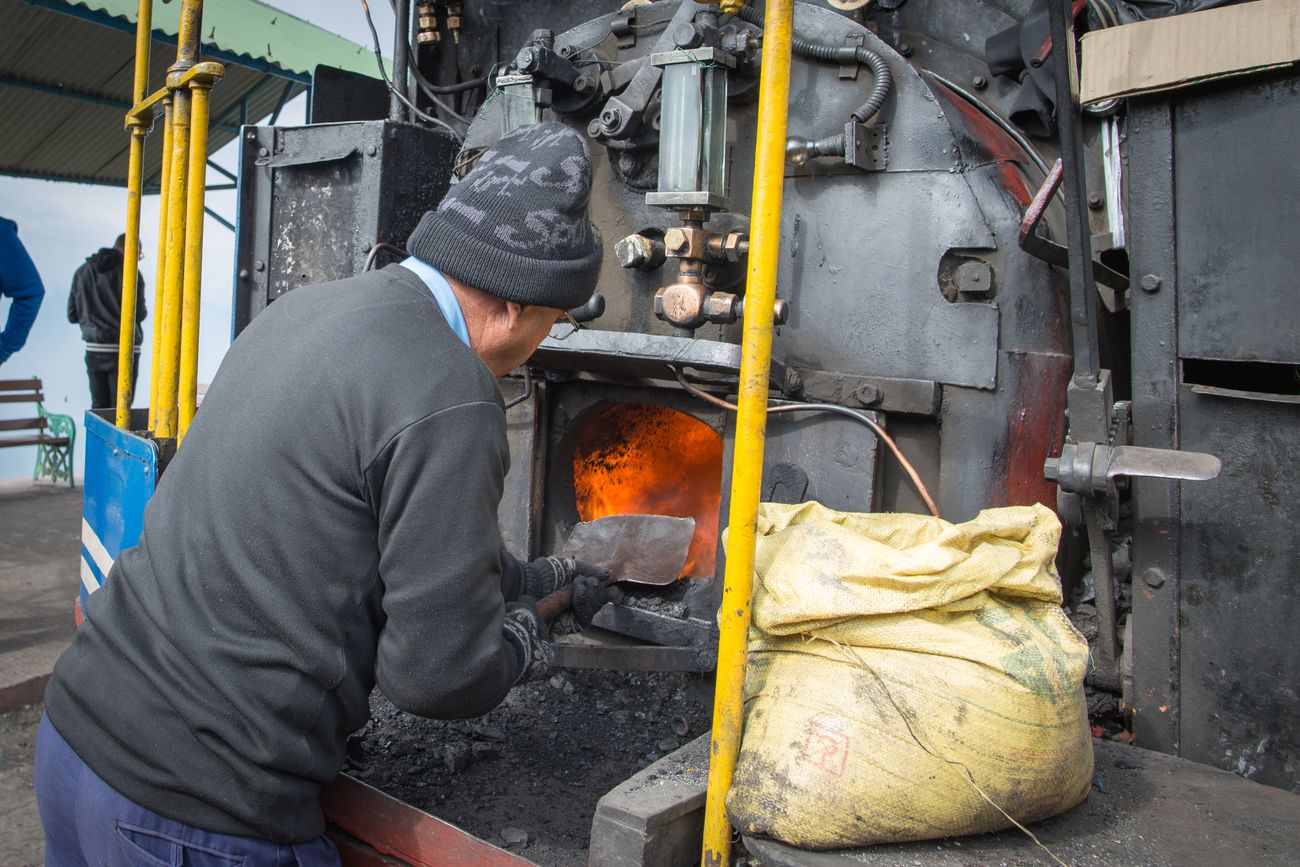
A technician services the steam-generating valve of the engine that runs the Darjeeling Himalayan Railway Toy Train, one of the most popular joy rides in the entire world © Gnomeandi
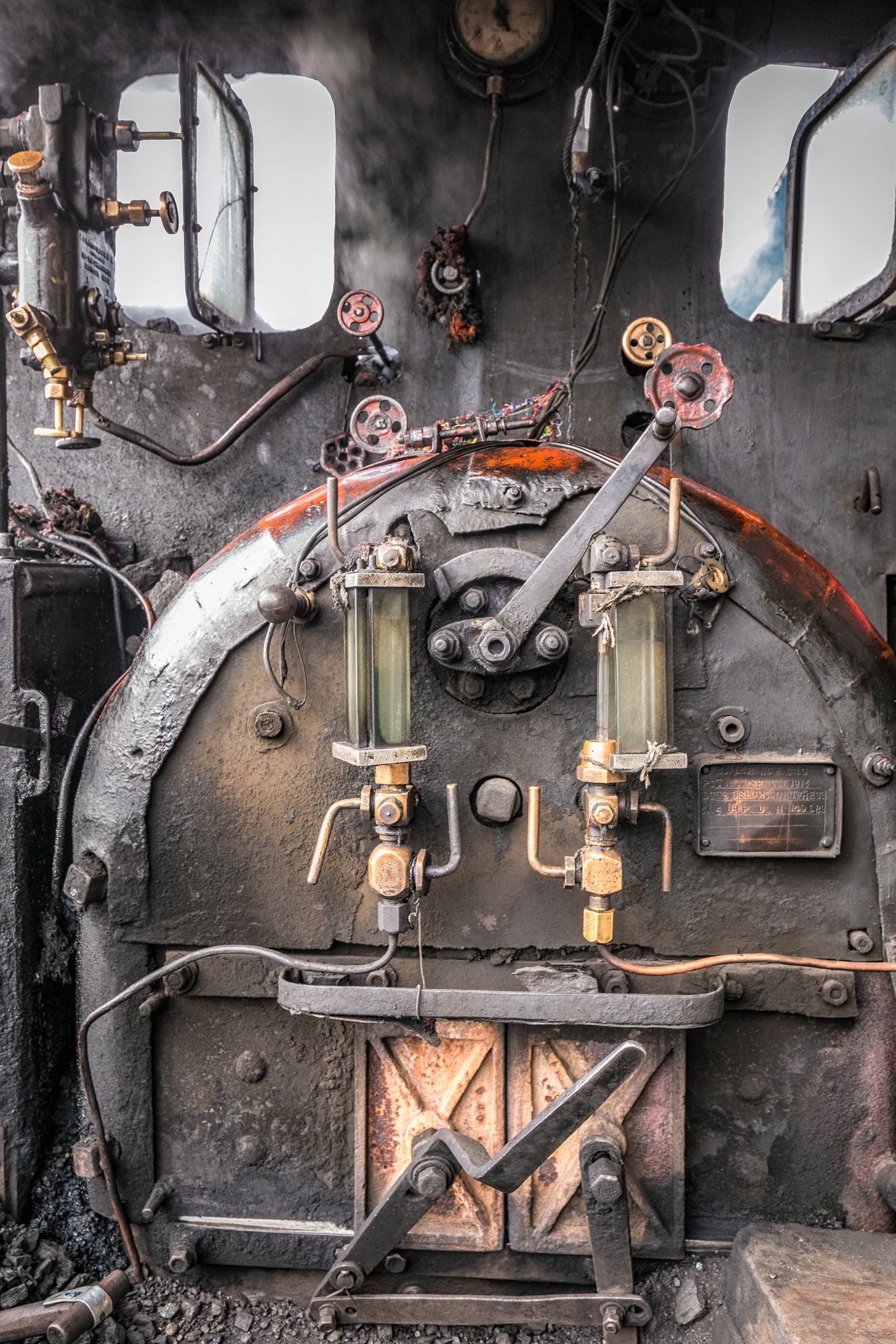
The train’s powerful controls © Ruslan Kalnitsky
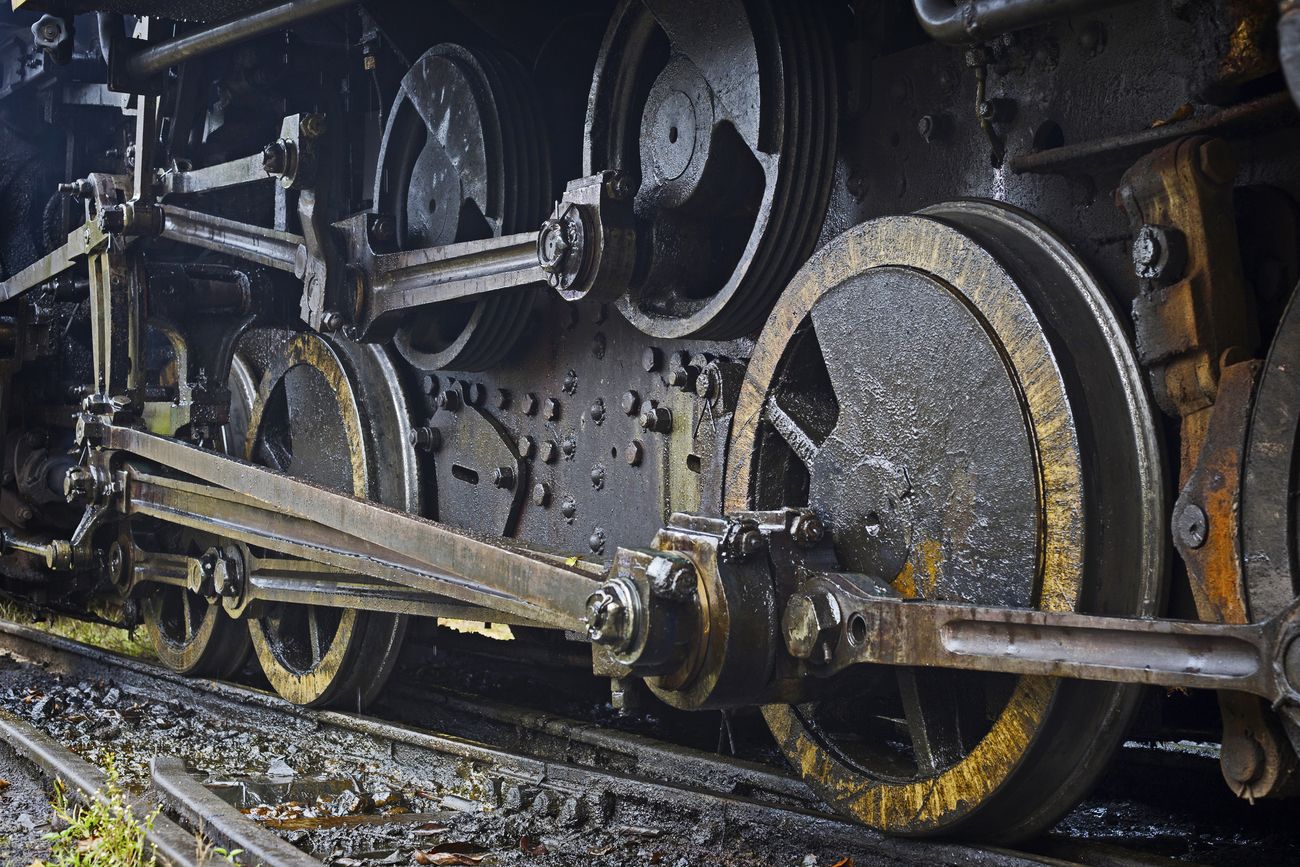
A close-up shot of the old-school wheels and rods of the steam locomotive giant that is adored by all, a glimpse into the history of this train that was started in 1879 © Alexandra Lande
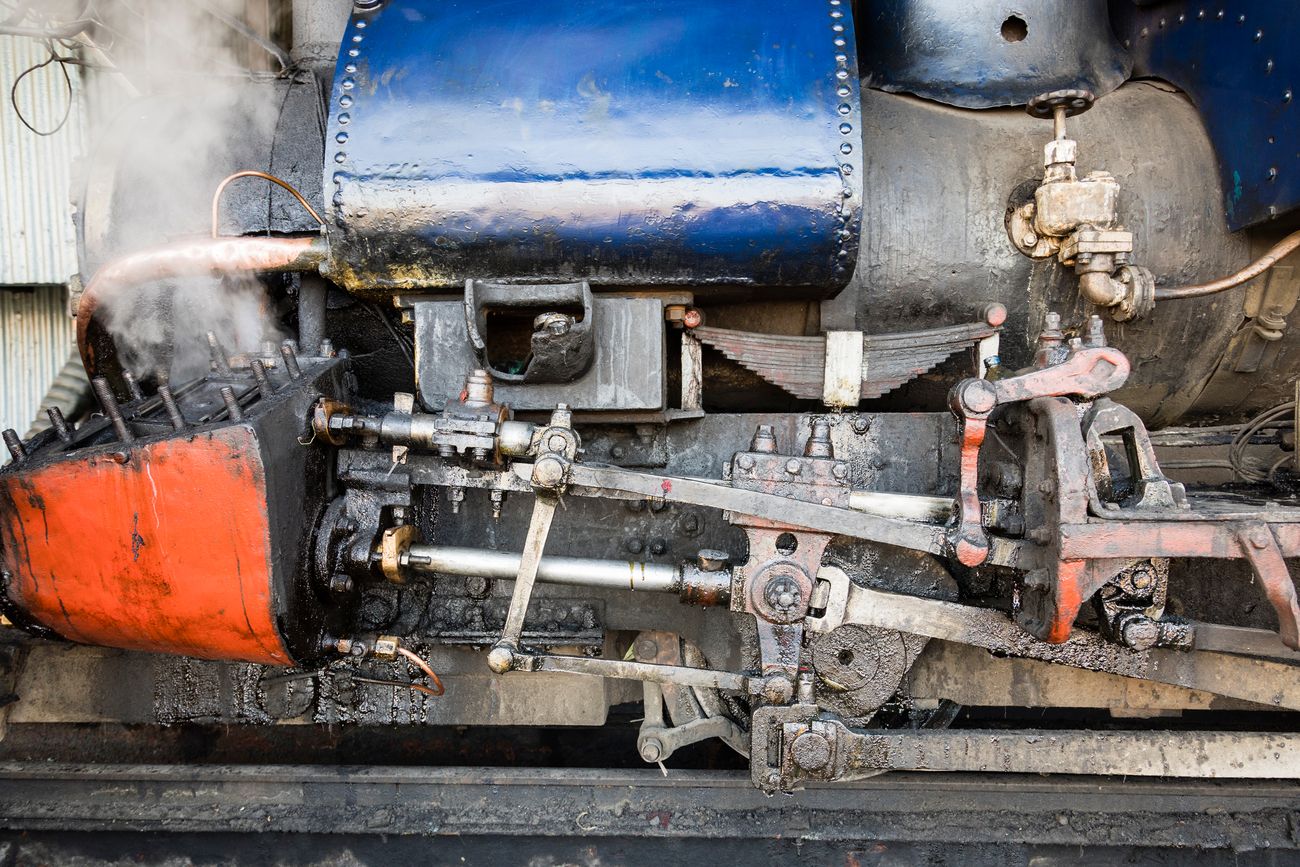
An up-close shot of the steam cylinder and the valves of the engine that runs the beloved Darjeeling Toy Train © Fredy Thuerig
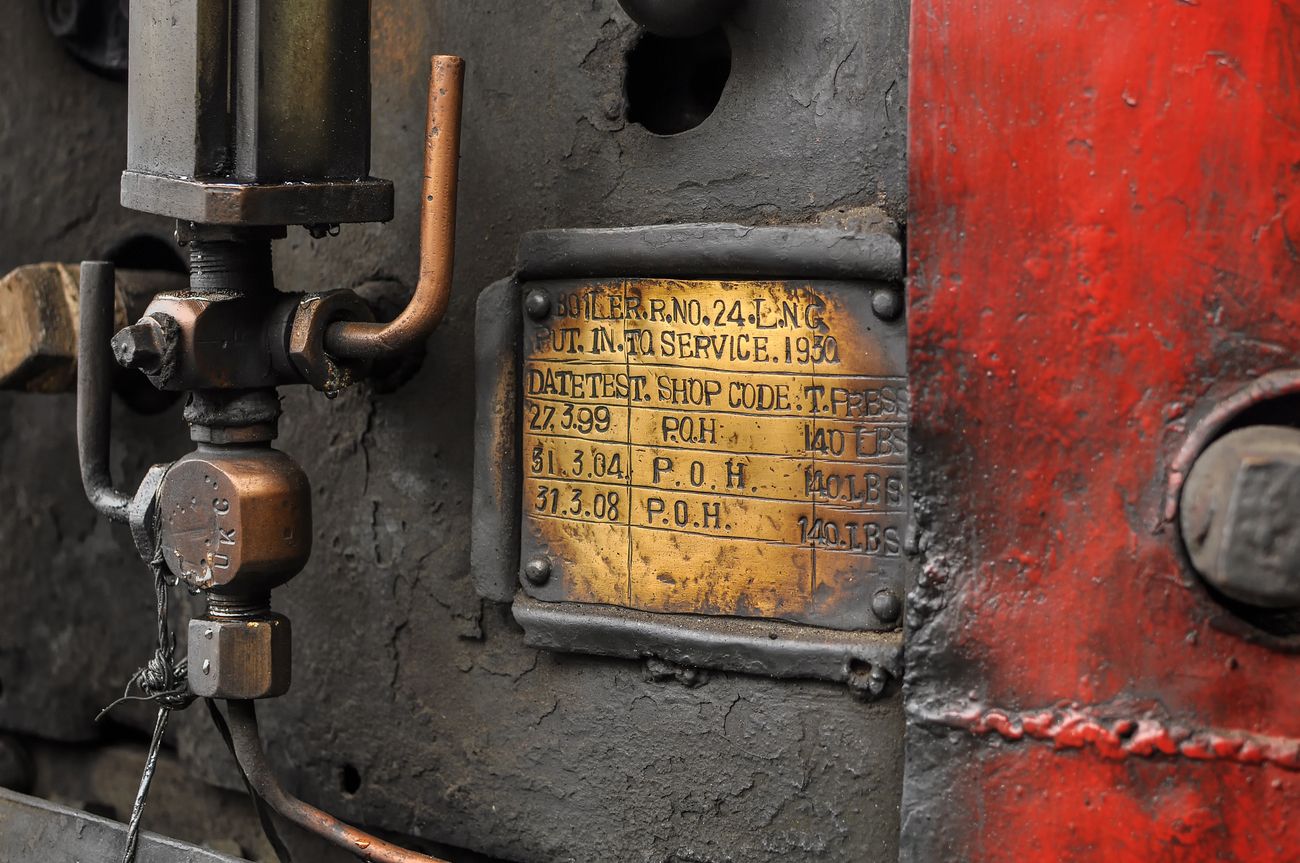
A close-up shot of the information on the engine of the Toy Train with important information regarding the engine for maintenance staff © Smshoot
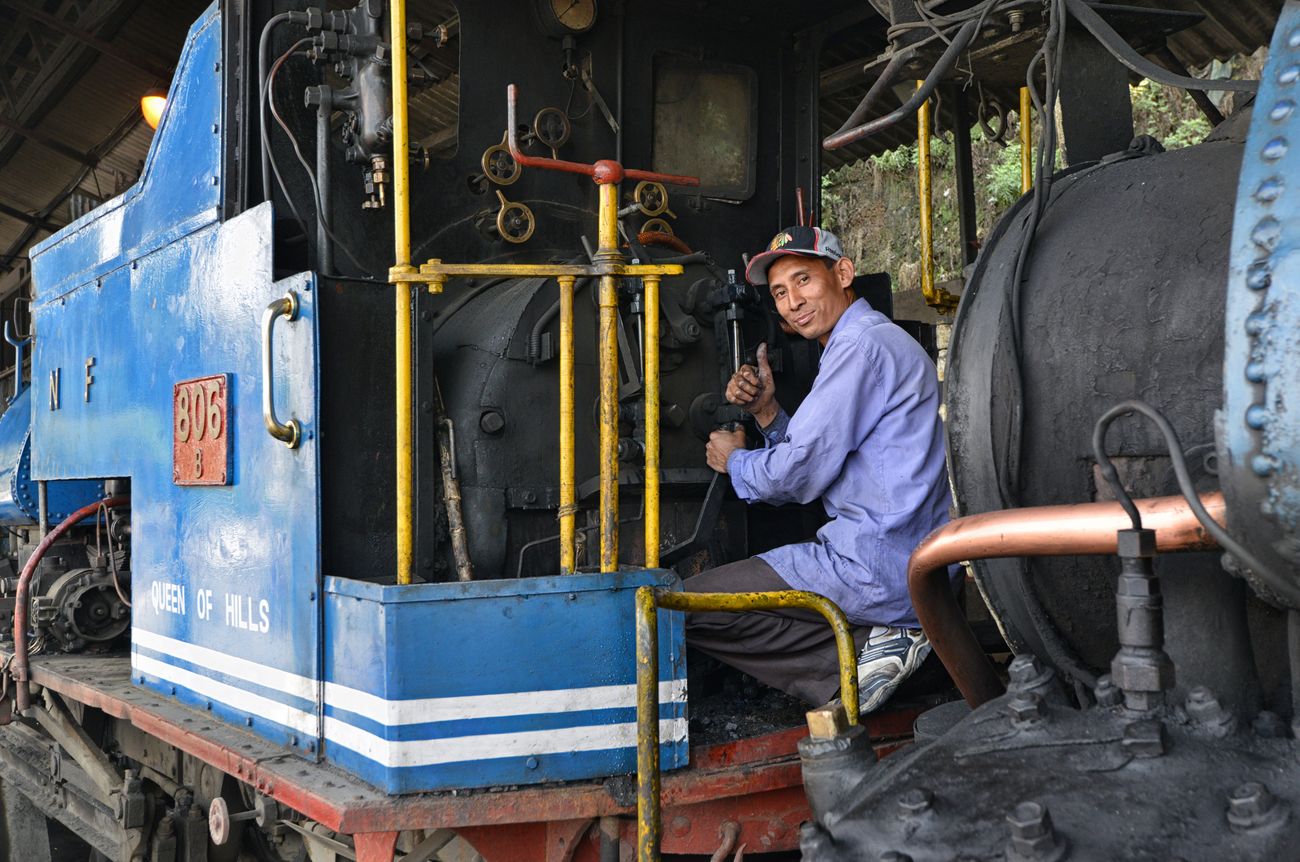
A mechanic checking the engine of the Darjeeling Himalayan Railway Train, lovingly referred to as the Toy Train, to ensure the safety of passengers © Hung Chung Chih
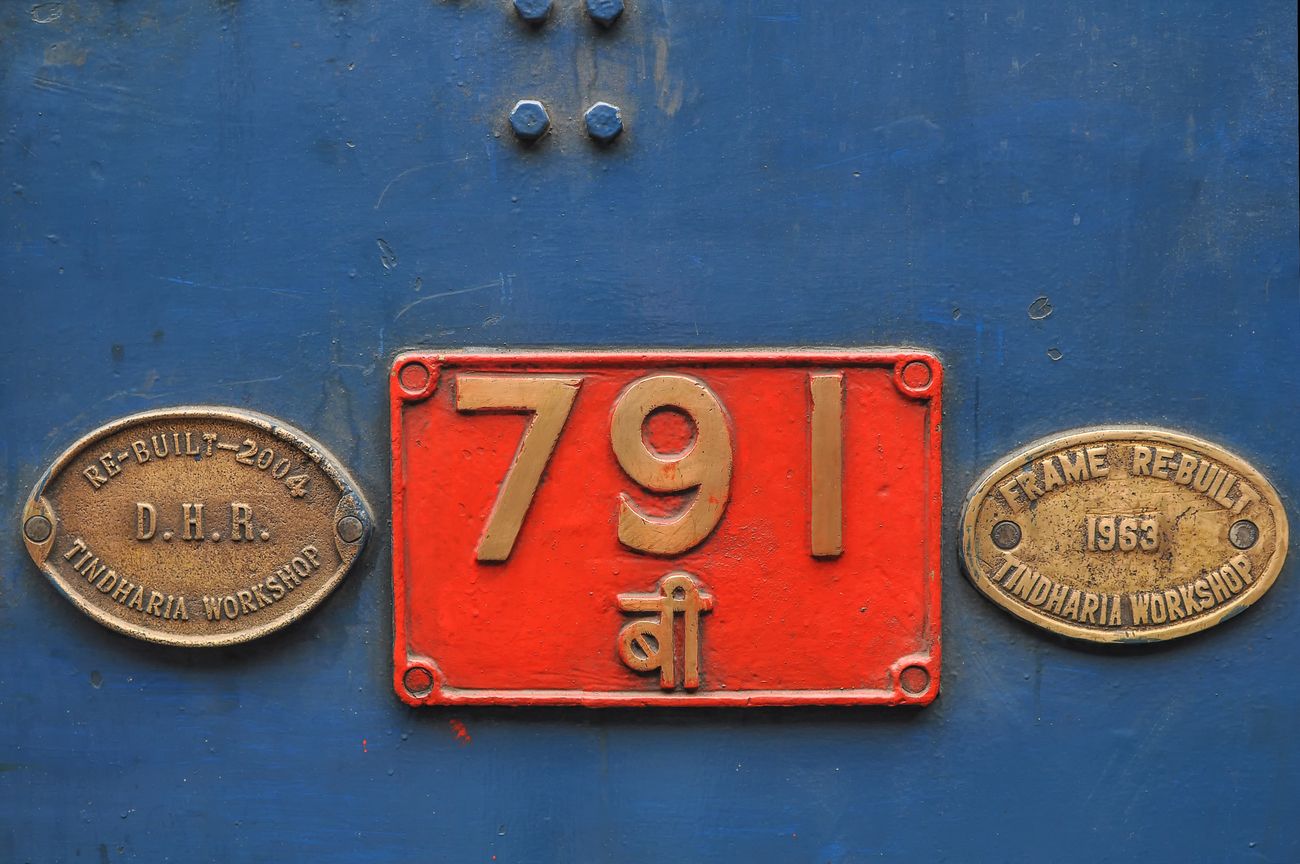
A close-up shot of the number plate of the Darjeeling Himalayan Railway Toy Train, which has been a hit amongst locals and travelers since it was first introduced © Smshoot
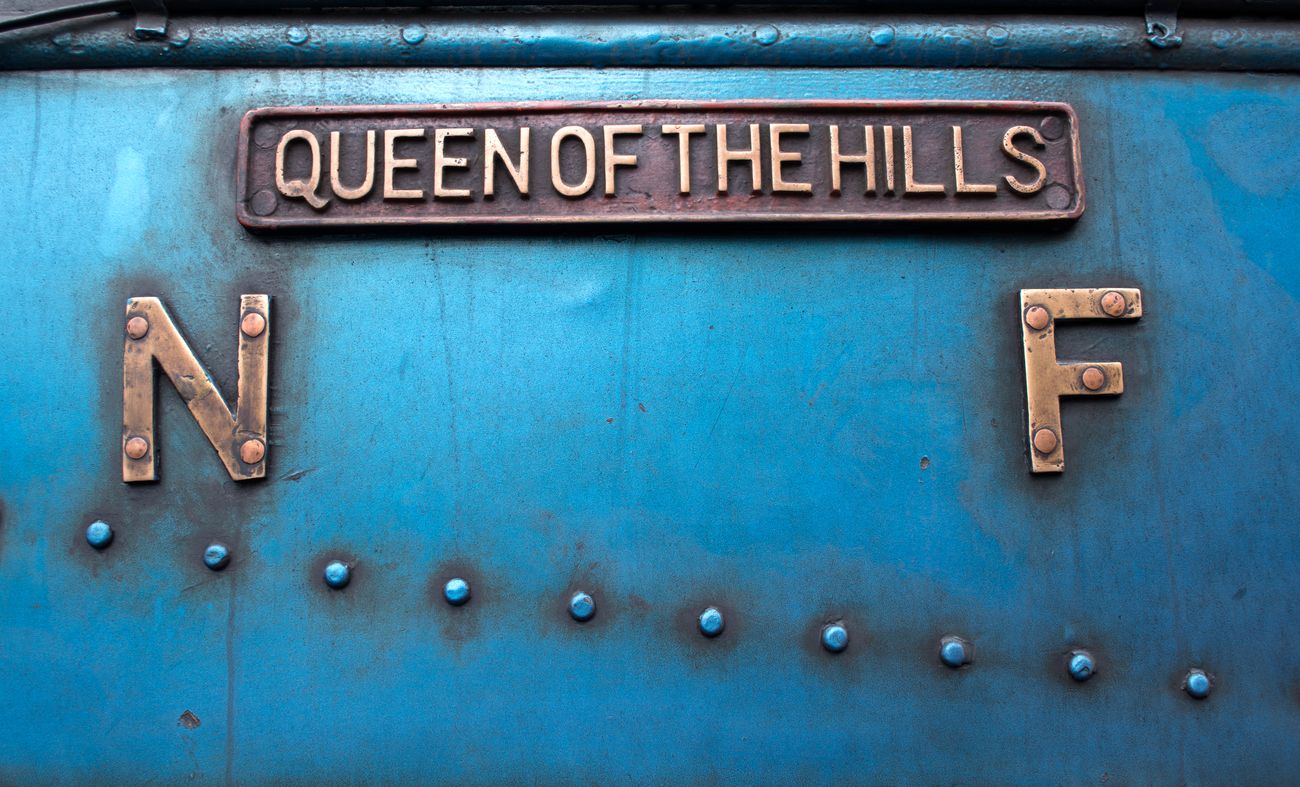
A close-up shot of the sign on the Toy Train saying ‘Queen of the Hills’ which is the pet name of the Darjeeling Himalayan Railway © Kakoli Dey
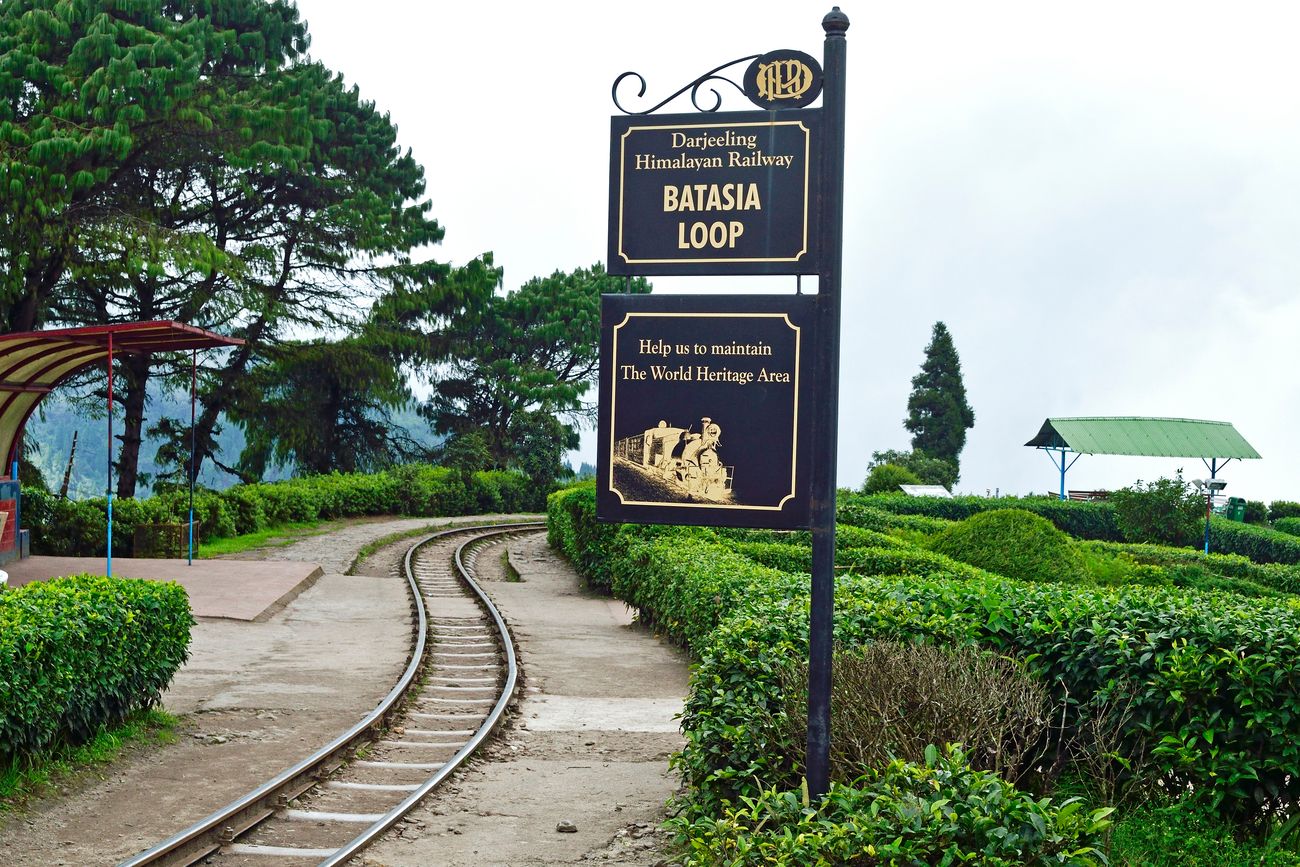
The Batasia Loop at Darjeeling is a spiral railway line track going over itself through a tunnel and over a hilltop which helps lower the ascent gradient of the Darjeeling Himalayan Railway © Chaitali Mitra
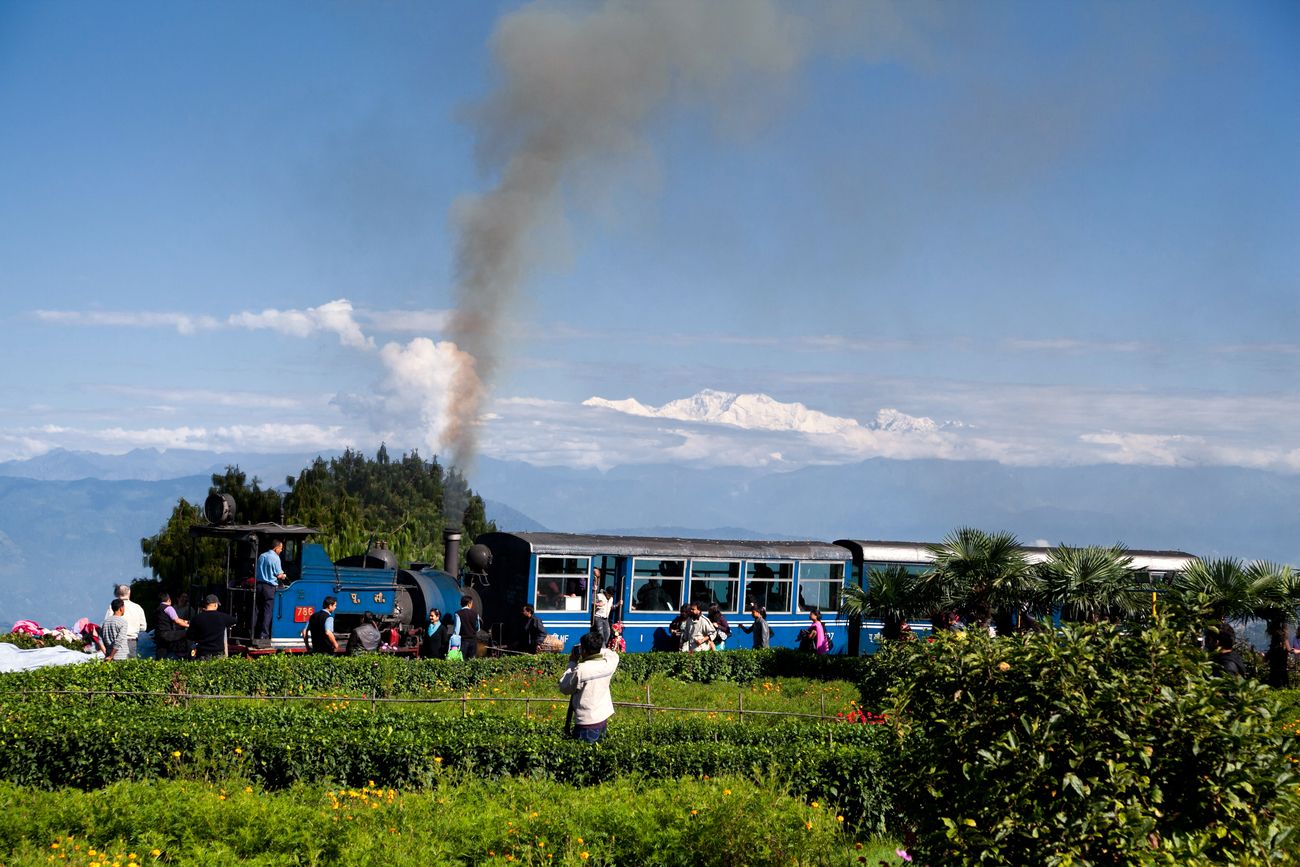
The UNESCO renowned Darjeeling Toy Train of the Indian Railway network passing through the lush fields with Mount Kanchenjunga in the background through the Batasia loop © Dzerkach Viktar
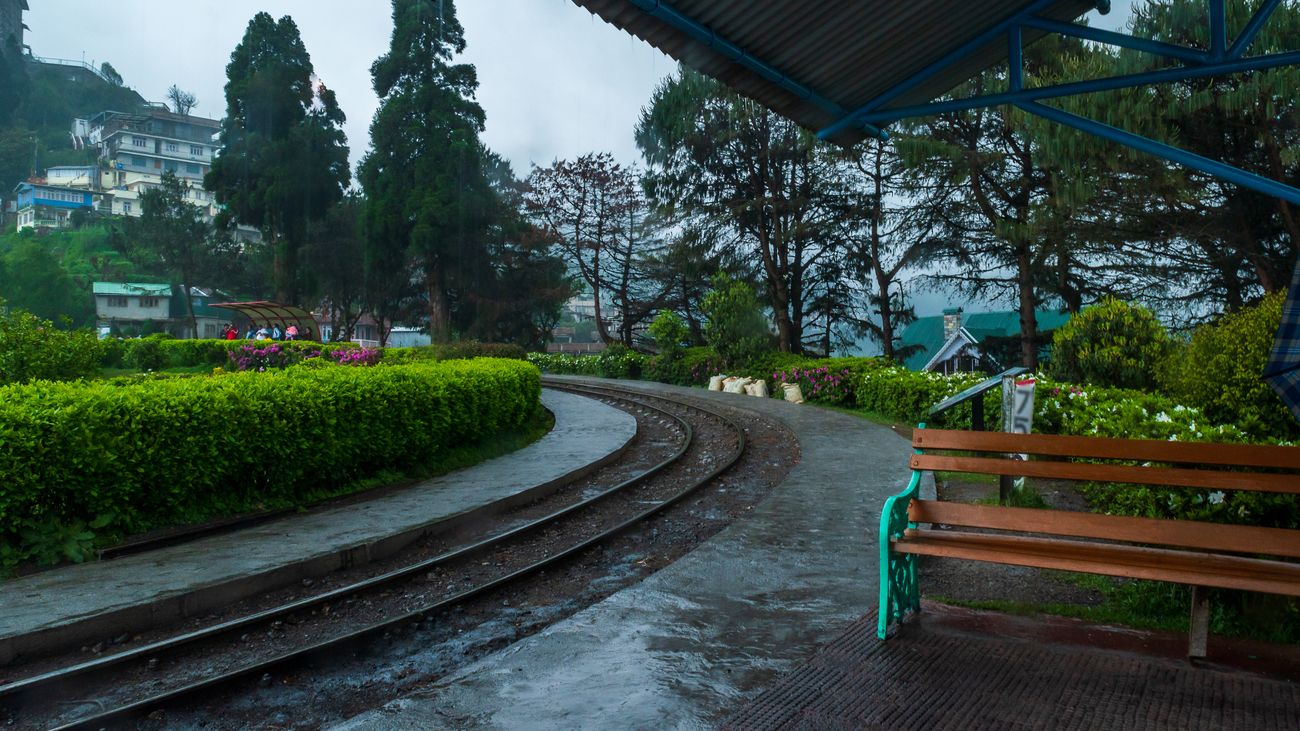
A shot of the 2-feet gauge of the Toy Train at the Batasia Loop station in Darjeeling after heavy rainfall © ABIR ROY BARMAN
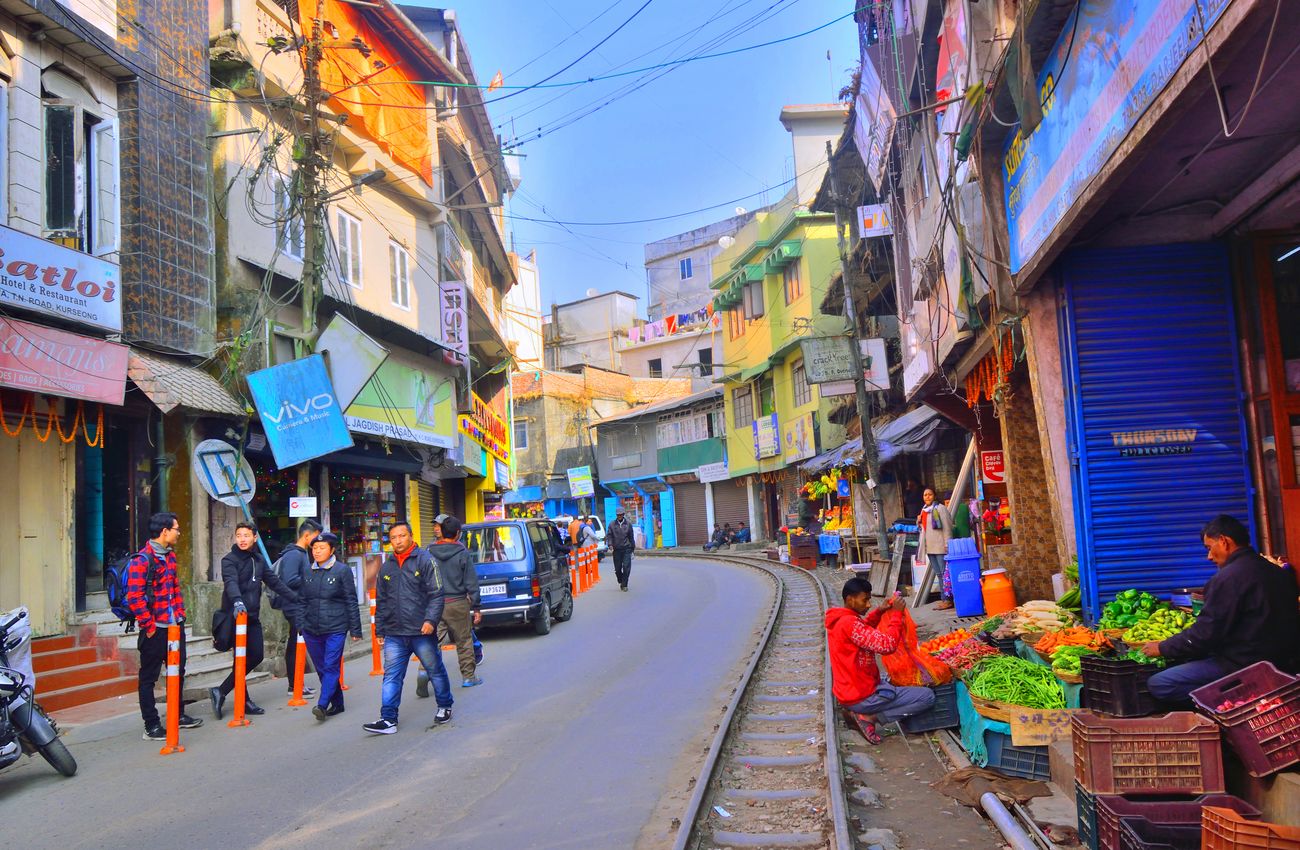
Early morning at a narrow street in Darjeeling as vegetable shops open up and locals dressed for the weather set out for work © Saurav022
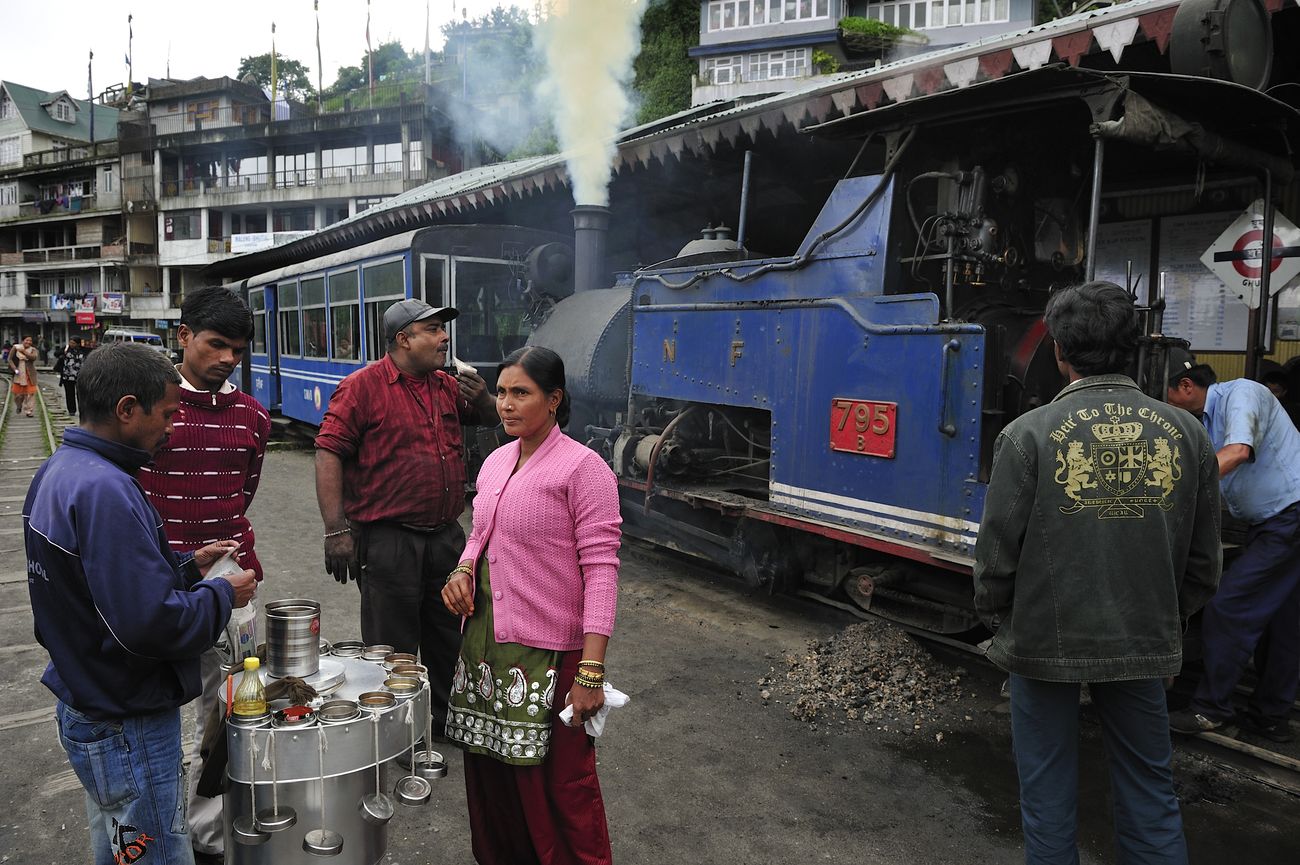
A local tea seller selling much-adored hot tea straight from the tea plantations of the region at the railway station to travelers of the Toy Train © T photography

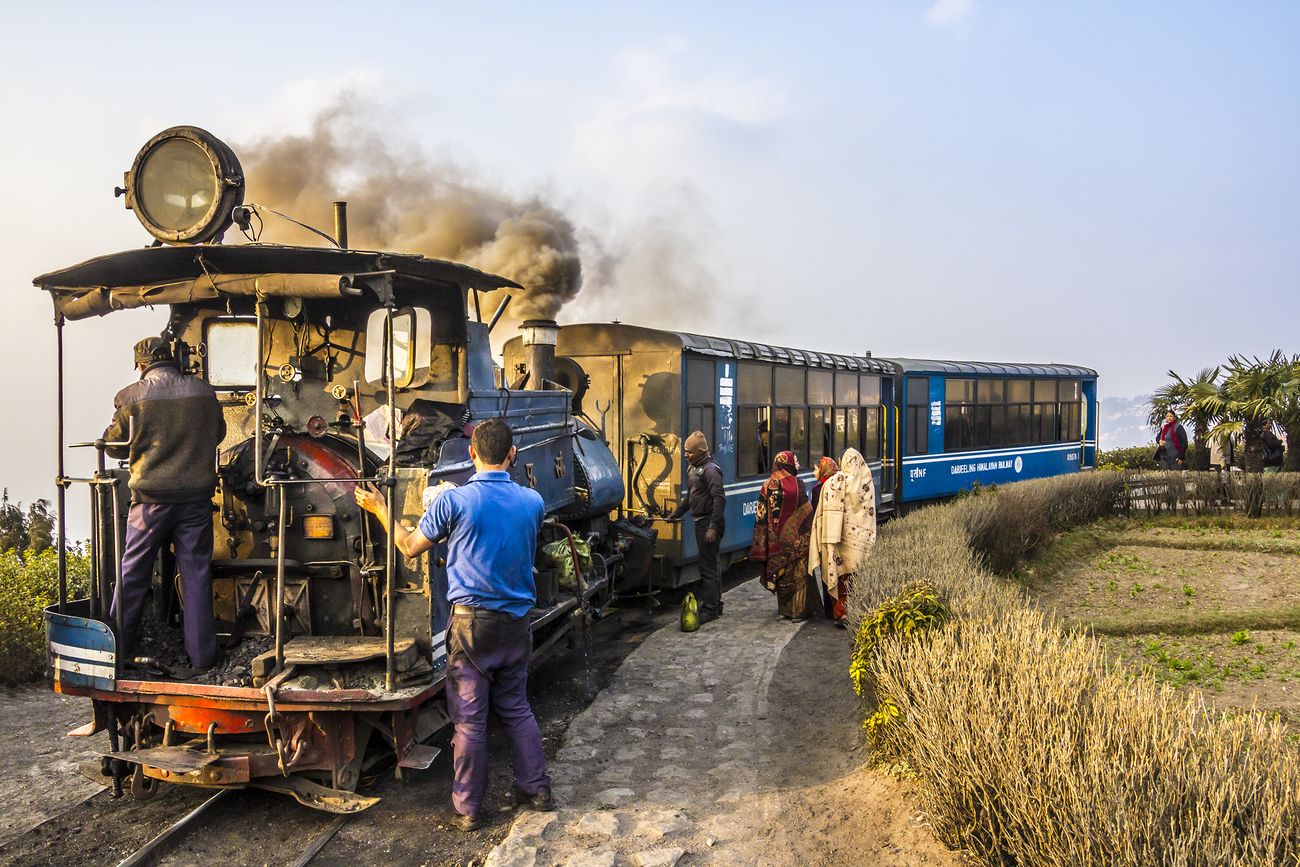
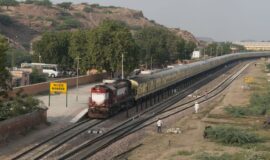

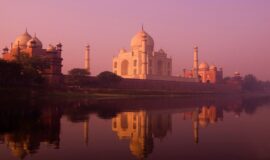
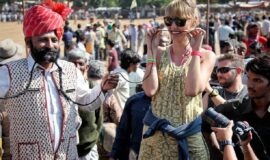
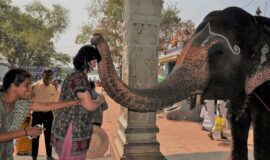
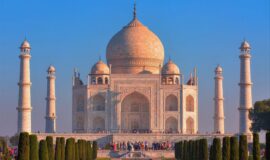
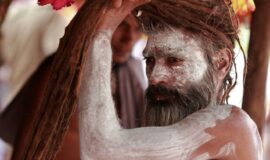
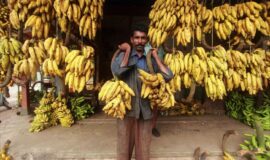

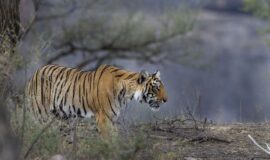
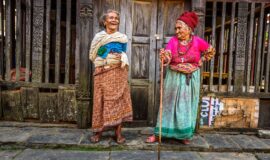
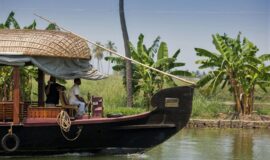
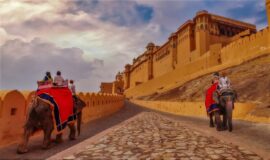
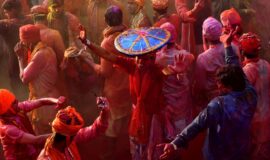


![Golden Triangle Tour with Goa [Culture + Beach Vacation] (12 days) Golden Triangle Tour with Goa [Culture + Beach Vacation] (12 days)](https://www.vacationindia.com/wp-content/uploads/2022/06/golden-triangle-tour-with-beach-vacation-270x160.jpg)
